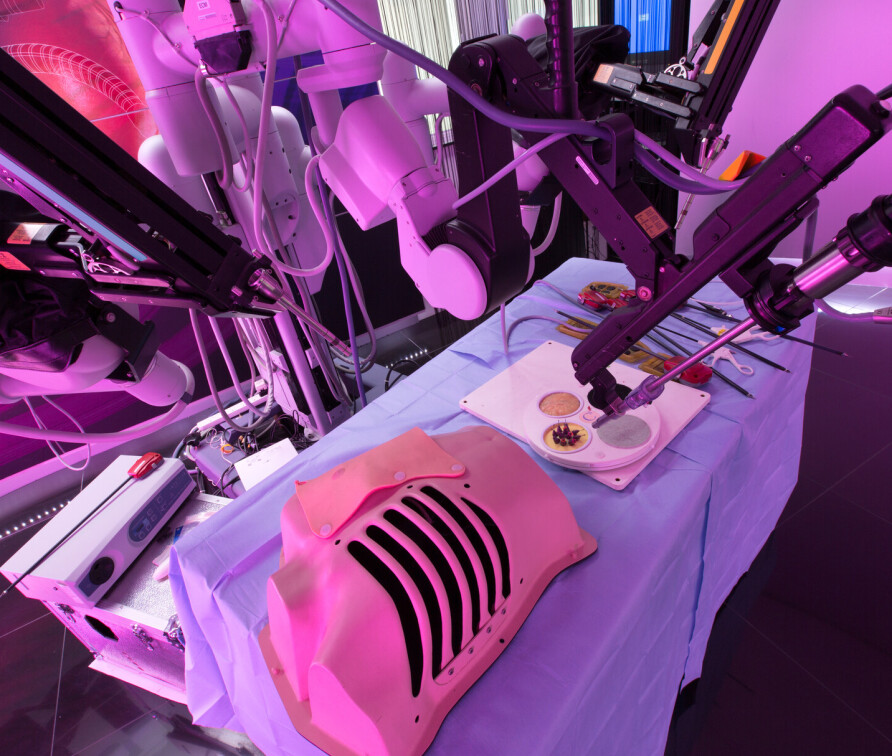Use the links below to access our reports, or scroll down to use the search function to explore all of our publications including peer-reviewed papers and briefing papers.
Our reports
Browse all publications
Results
- Showing results for:
- Reset all filters
Search results
-
Conference paperLeiloglou M, Qi J, Rees Whippey D, et al., 2018,
Guiding Fluorescence-Augmented Imaging System for Breast Cancer Surgery
, BMES Annual Meeting -
Conference paperLeiloglou M, Qi J, Rees Whippey D, et al., 2018,
Guiding Fluorescence-Augmented Imaging System for Breast Cancer Surgery
, EPSRC Image Guided Therapies Young Investigators -
Journal articleSoukup T, Lamb BW, Arora S, et al., 2018,
Successful strategies in implementing a multidisciplinary team working in the care of patients with cancer: an overview and synthesis of the available literature
, Journal of Multidisciplinary Healthcare, Vol: 11, Pages: 49-61, ISSN: 1178-2390In many health care systems globally, cancer care is driven by multidisciplinary cancer teams (MDTs). A large number of studies in the past few years and across different literature have been performed to better understand how these teams work and how they manage patient care. The aim of our literature review is to synthesize current scientific and clinical understanding on cancer MDTs and their organization; this, in turn, should provide an up-to-date summary of the current knowledge that those planning or leading cancer services can use as a guide for service implementation or improvement. We describe the characteristics of an effective MDT and factors that influence how these teams work. A range of factors pertaining to teamwork, availability of patient information, leadership, team and meeting management, and workload can affect how well MDTs are implemented within patient care. We also review how to assess and improve these teams. We present a range of instruments designed to be used with cancer MDTs – including observational tools, self-assessments, and checklists. We conclude with a practical outline of what appears to be the best practices to implement (Dos) and practices to avoid (Don’ts) when setting up MDT-driven cancer care.
-
Journal articleKostopoulou O, Porat T, Corrigan D, et al.,
Supporting first impressions reduces diagnostic error: evidence from a high-fidelity simulation
, British Journal of General Practice, ISSN: 1478-5242 -
Journal articleLaunders H, Jacklin A, Franklin BD, 2015,
Allergy transcription before and after the implementation of an inpatient electronic prescribing system in a tertiary referral hospital: a case study in two oncology wards
, Safety in Health, Vol: 1, ISSN: 2056-5917Background Patients with allergies can be protected from potentially life threatening harm by recording their allergen and reaction correctly. Electronic prescribing is being widely implemented with a view to improving patient safety; decision support functions can alert prescribers to the risk of prescribing an allergen. However the allergen must be correctly recorded to utilize this functionality. This study aimed to explore whether the introduction of an inpatient electronic prescribing system, in place of paper-based prescribing, has affected the accuracy of transfer of allergen data between hospital documentation systems.Methods Retrospective case note review of a random sample of 100 patients admitted to two oncology wards in a UK hospital before implementation of electronic prescribing, and 100 admitted afterwards. We compared accuracy of allergy information transcribed from admission documentation to the inpatient prescribing system and then to the separate electronic discharge summary for paper-based versus electronic inpatient prescribing. We analyzed data separately for patients with no known drug allergy and those with a recorded allergen.Results There was no difference between prescribing systems in the transfer of ‘no known drug allergy’ status from the admission documentation to the inpatient prescribing record. However transfer of ‘no known drug allergy’ status was better on electronic discharge summaries prepared from the separate electronic inpatient system (transferred correctly for 58 of 72 discharges, 81%) when compared with paper inpatient prescriptions (26 of 68 patient discharges, 38%) p<0.001.For patients with an allergy the correct transfer of allergens from admission documentation to the inpatient prescribing record was lower for the electronic prescribing system (10 of 28 patient admissions, 36%) when compared with paper prescribing (21 of 32 patient admissions, 66%) p=0.02. However correct transfer of aller
-
Journal articlepatel NP, seneci CS, yang GZY, et al.,
Flexible platforms for natural orifice transluminal and endoluminal surgery. Endoscopy International Open, 2(02), E117-E123.
, Endoscopy International Open
This data is extracted from the Web of Science and reproduced under a licence from Thomson Reuters. You may not copy or re-distribute this data in whole or in part without the written consent of the Science business of Thomson Reuters.

